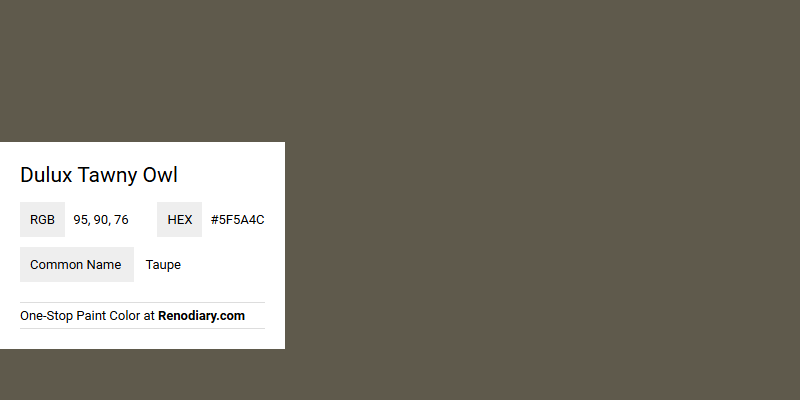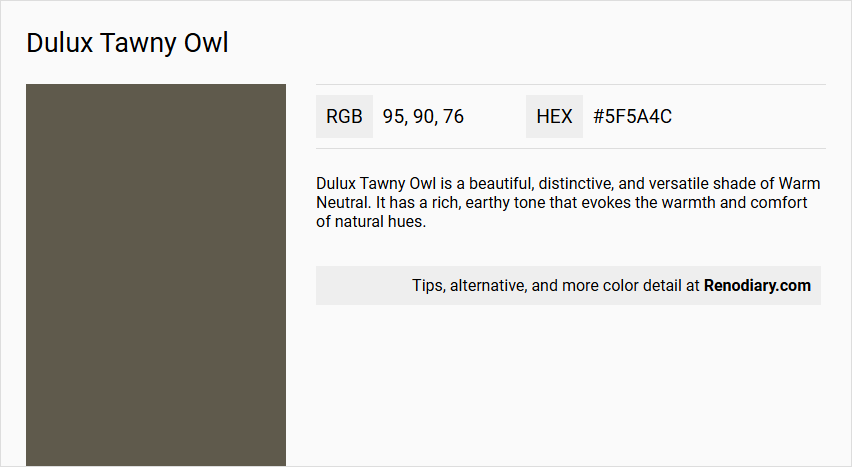
Dulux's Tawny Owl, with its RGB composition of (95, 90, 76), is commonly identified as a shade of taupe. This particular hue blends subtle tones of brown and gray, creating a versatile color that complements a wide range of interior design palettes. Its soothing and earthy character makes it an ideal choice for creating a warm and inviting atmosphere in any room.
Dulux Tawny Owl
Dulux Tawny Owl is a beautiful, distinctive, and versatile shade of Warm Neutral. It has a rich, earthy tone that evokes the warmth and comfort of natural hues.
Undertones
The color has undertones that are generally warm and slightly earthy, which makes it suitable for creating a cozy and inviting atmosphere.
Color Values
The hex code for Tawny Owl is #5f5a4c. This color falls within the warm neutral spectrum, indicating it has a balanced mix of red, green, and blue components that lean towards warmth.
Usage
Tawny Owl is suitable for every room in the house. It can be used on walls, ceilings, and even trim to create a cohesive and harmonious interior design. It pairs well with a variety of decorating styles and can be combined with other neutral colors for a balanced look.
Atmosphere
This color helps to create a warm, welcoming, and comforting atmosphere. It is ideal for spaces where you want to foster a sense of relaxation and coziness, such as living rooms, bedrooms, and dining areas. The warm undertones of Tawny Owl contribute to a soothing and inviting environment.
Dulux Tawny Owl Color Alternative
Dulux Tawny Owl has inspired a range of sophisticated alternatives including Tikkurila Grotto M449, Sherwin Williams Rookwood Dark Green SW 2816, and Sherwin Williams Garden Gate SW 6167 that cater to diverse design tastes. Each color alternative offers its unique character, with Tikkurila Grotto M449 delivering a bold, contemporary twist, Sherwin Williams Rookwood Dark Green SW 2816 providing an earthy and timeless feel, and Sherwin Williams Garden Gate SW 6167 evoking an inviting and harmonious ambiance. Designers and homeowners alike can explore these carefully curated color choices to achieve spaces that maintain a refined aesthetic while embracing individuality and modernity.
Bathroom
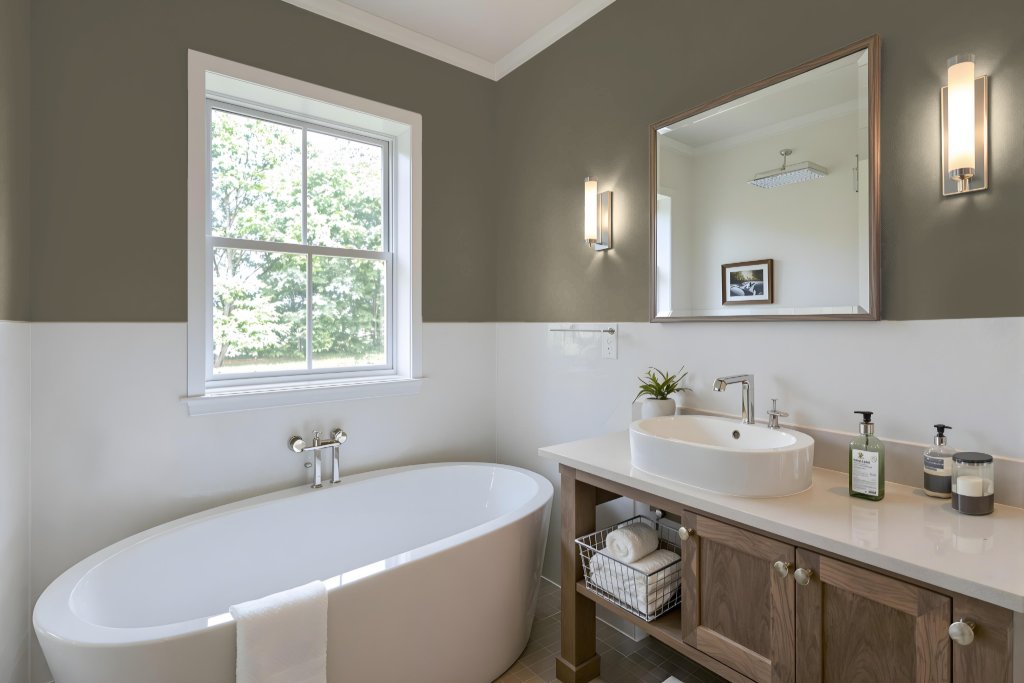
For a bathroom, Dulux Tawny Owl is a practical choice that brings warmth and style to a moisture-prone area. Selecting an appropriate formula with added protection helps guard against mould and moisture, ensuring long-lasting performance.
Preparation is key for a smooth finish—ensuring that surfaces are clean, dry, and free of loose material, along with using a fungicidal wash when necessary can greatly improve adherence and durability. The paint can be applied in different finishes, allowing you to choose the optimal balance between sheen and resilience while following recommended drying and curing times to maintain the best overall finish.
Bedroom
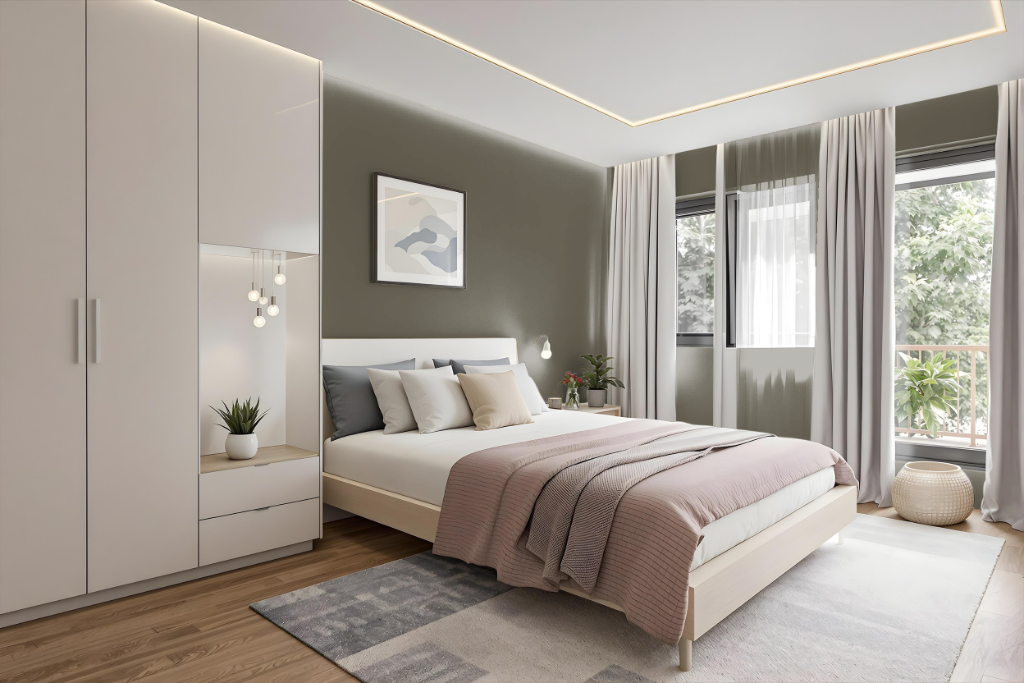
For a bedroom color scheme, Dulux Tawny Owl creates a warm, inviting backdrop complemented by modern accents. Crisp white elements infuse brightness and contrast, while soft greys help achieve a balanced and calming ambiance for a restful space.
To introduce visual energy, incorporating hues with a subtle blue undertone adds delightful dynamics without overwhelming the setting. Lighter variations work well for trim and furniture to sustain a coherent look, whereas deeper tones provide additional depth and interest on accent walls or select pieces.
Kitchen

For a kitchen color scheme, Dulux Tawny Owl sets a warm and inviting tone that can serve as a striking focal point. Crisp white accents on cabinets, countertops, or trim introduce brightness and contrast, while soft greys help create a calm atmosphere that feels both spacious and contemporary.
Incorporating touches of blue adds a lively visual interest that energizes the overall design. Pairing these hues with subtle neutral tones further enhances the cohesion and style of the kitchen, resulting in a thoughtfully designed space that is both elegant and welcoming.
Living Room
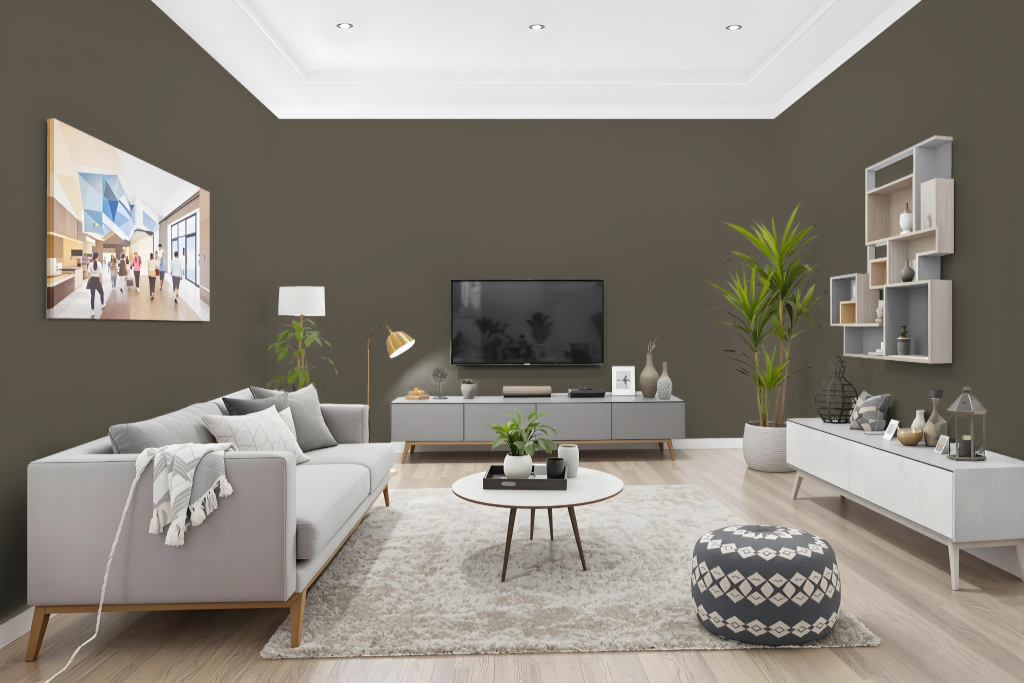
In a living room, Dulux Tawny Owl sets a refined tone with its warm, darker beige hue. This color creates an inviting atmosphere when accent pieces in crisp white help highlight its rich depth, or when softened by the inclusion of gentle greys.
Its unique finish adapts to various design aesthetics, making it an excellent choice for both modern and traditional interiors. Careful attention to the underlying surface is necessary, as textures can subtly influence the final appearance of this engaging color.
Outdoor
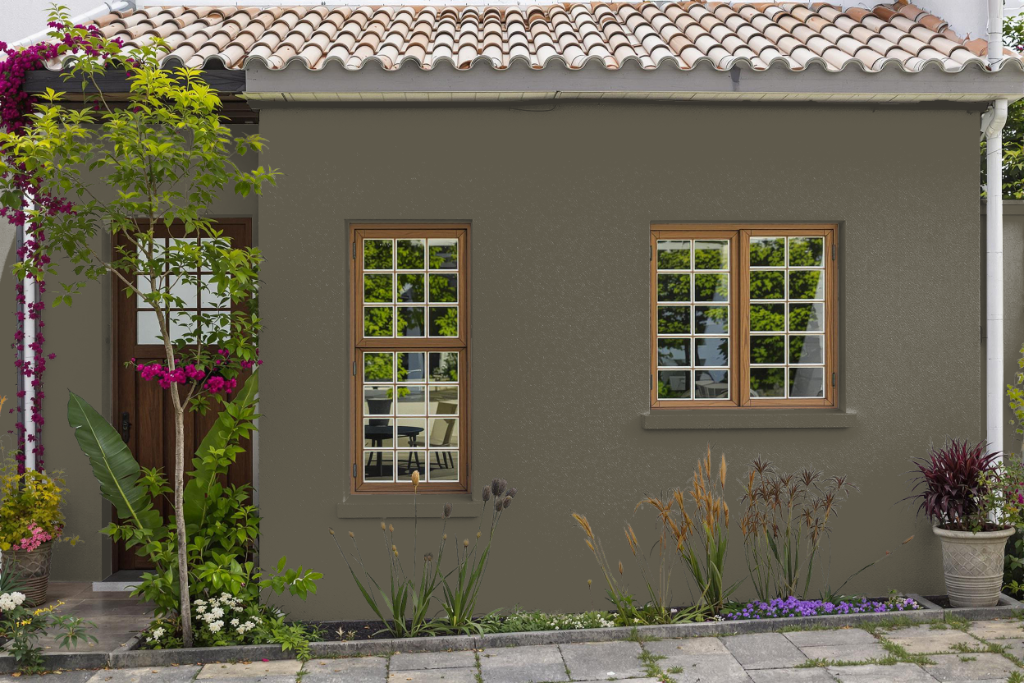
Dulux Tawny Owl is a striking home outdoor color that enhances exteriors with a durable and attractive finish. It is tied to an exterior quality emulsion renowned for its shower resistance soon after application, a low VOC content, a matt finish, and washable properties. The paint can be applied using a brush, roller, or airless spray, ensuring excellent coverage when surfaces are clean, sound, and dry.
Offering a robust performance that can endure for up to 15 years, this finish is designed to withstand changeable weather conditions. Recommended for new or bare surfaces with a thinned coat to seal them, the paint also allows for quick re-coating after just a few hours, making it a practical choice for enhancing and protecting your outdoor spaces.
